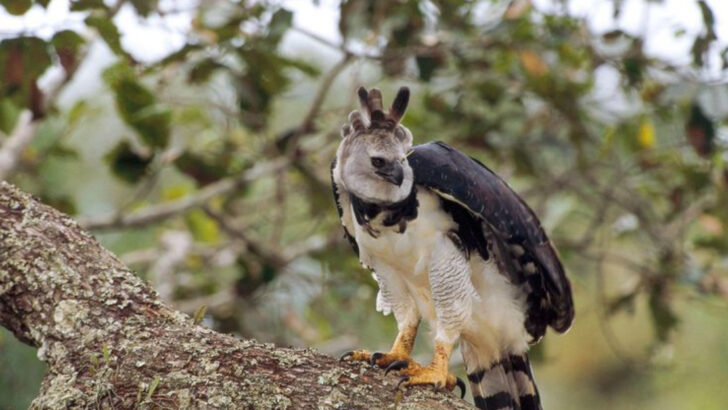This bird doesn’t just rule the skies—it dominates them. The harpy eagle is a living legend, with talons bigger than a grizzly bear’s claws and enough strength to snatch a monkey right out of a tree. If there were a heavyweight championship for birds, this apex predator would take the crown without breaking a sweat.
With a wingspan stretching over seven feet and a piercing gaze that could stop you in your tracks, the harpy eagle is as intimidating as it is majestic. Perched high in the rainforest canopy, it hunts with precision, power, and an attitude that says, “I own this jungle.”
Despite its fearsome reputation, this incredible raptor remains shrouded in mystery, rarely seen by humans and often misunderstood. From its striking appearance to its almost mythical strength, here are 10 facts that prove the harpy eagle is, without a doubt, the most powerful bird of prey on the planet.
Largest Talons in the Avian World
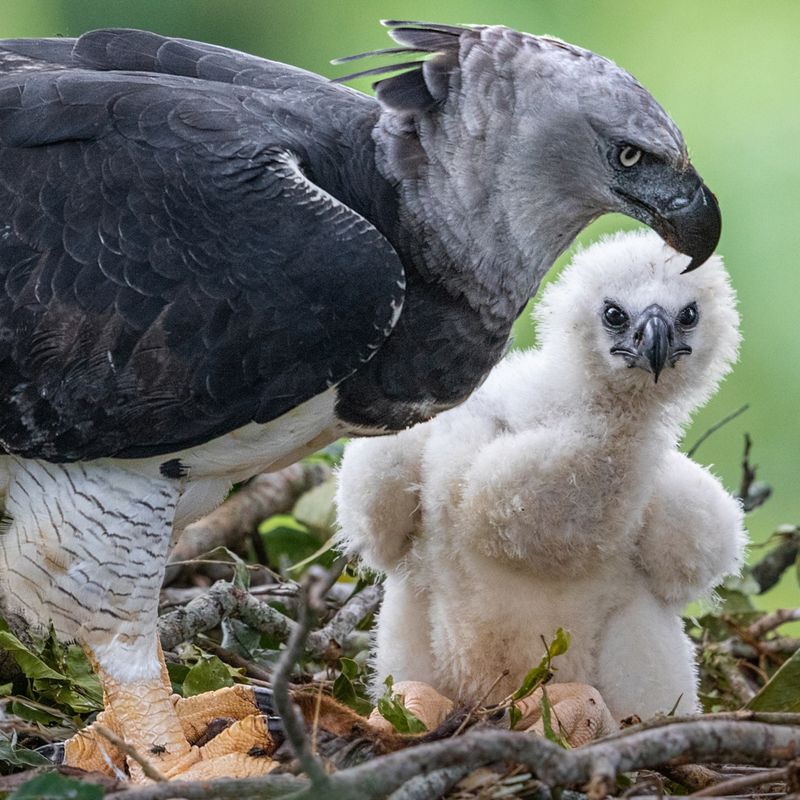
The Harpy Eagle boasts the largest talons of any living eagle, measuring up to 5 inches. These powerful tools enable them to snatch prey as heavy as monkeys and sloths. The strength in their talons is equivalent to the bite force of a Rottweiler.
This formidable grip ensures the eagle can swiftly lift its prey to the canopy of the rainforest, away from potential scavengers. The talons’ design is not just for hunting but also provides stability when perched on branches.
It’s this unique feature that aids in their reputation as top predators in their habitat.
Impressive Wingspan
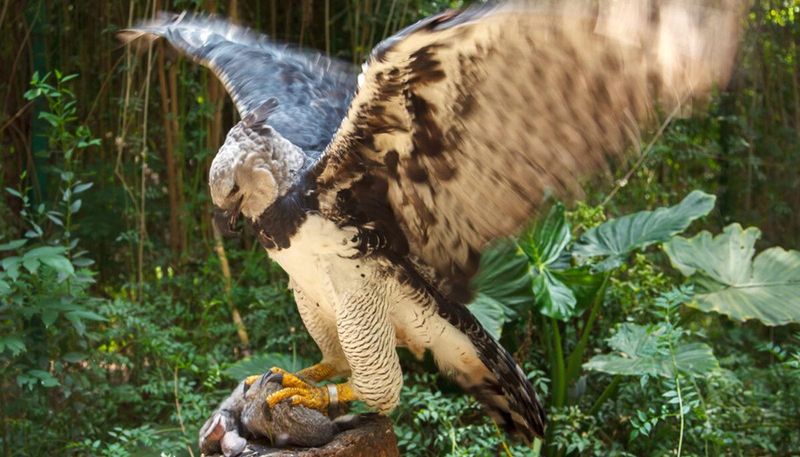
With a wingspan reaching up to 7 feet, the Harpy Eagle commands attention. This expansive reach supports its agile flight through dense forests. The wings are broad and strong, allowing the bird to maneuver through intricate canopy layers.
Despite their size, these eagles are adept at swift, silent flights, which is crucial for hunting. The wings’ design minimizes sound, giving them the element of surprise over prey.
Their ability to glide effortlessly above the trees showcases both power and grace, marking them as true aerial giants in their domain.
Distinctive Crown of Feathers
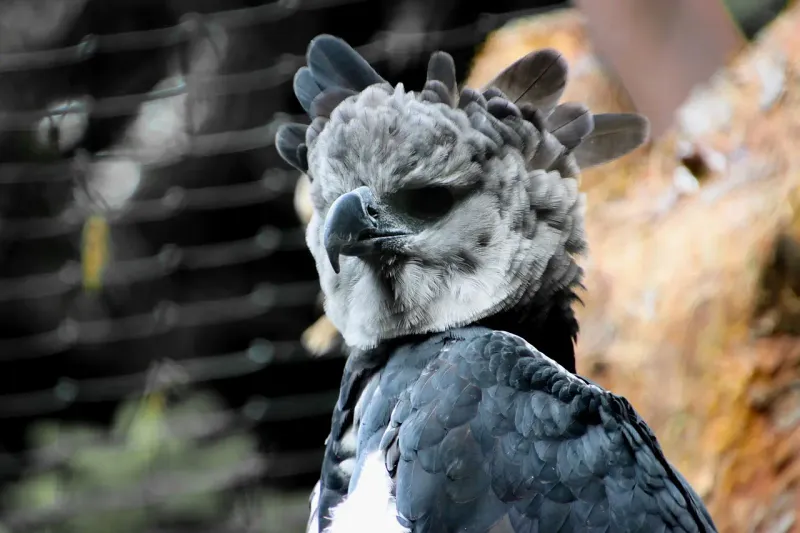
The Harpy Eagle’s crown of feathers is not just for show. When raised, these feathers serve as a communication tool, expressing alertness or agitation. This majestic crest adds to their regal appearance, contributing to their nickname, ‘The Bird of Kings.’
The crown’s role in communication is crucial during mating rituals and territory disputes. It provides visual cues to other eagles, asserting dominance or readiness to mate.
This unique feature makes them easily recognizable among the avian population, enhancing both their charm and their intimidating presence in the wild.
Habitat in the Rainforests
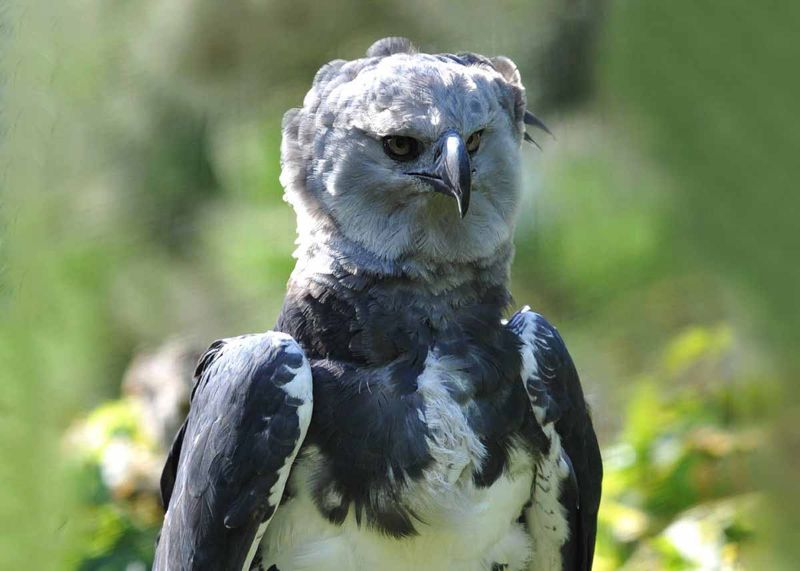
Harpy Eagles predominantly reside in the tropical rainforests of Central and South America. These dense, humid forests offer the perfect environment for hunting and nesting. The high canopy allows them to perch and observe their surroundings for potential prey.
Their habitat is crucial for their survival, providing both food and protection. However, deforestation poses a significant threat, reducing their living space and food resources.
Conservation efforts are essential to preserve these majestic birds’ natural habitats, ensuring they continue to soar across the skies of the rainforest for generations to come.
Diet of Monkeys and Sloths
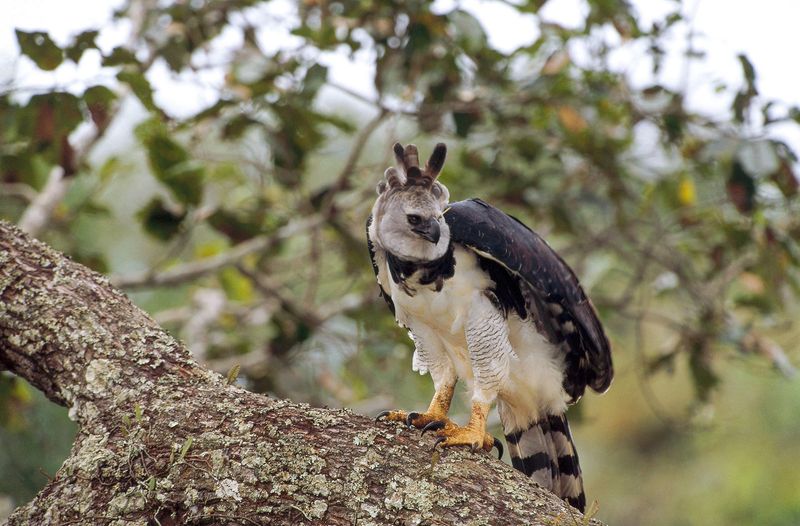
Harpy Eagles are apex predators, primarily hunting medium-sized mammals like monkeys and sloths. Their diet is a testament to their strength and hunting skills. These eagles rely on their keen eyesight and stealth to spot and capture prey from high above.
The process is swift and decisive, showcasing their agility and power. By targeting tree-dwelling mammals, they maintain a crucial role in the ecosystem, balancing population numbers.
Understanding their dietary habits offers insights into the complex food web of the rainforest and underscores the importance of preserving their natural environment.
Unique Hunting Techniques
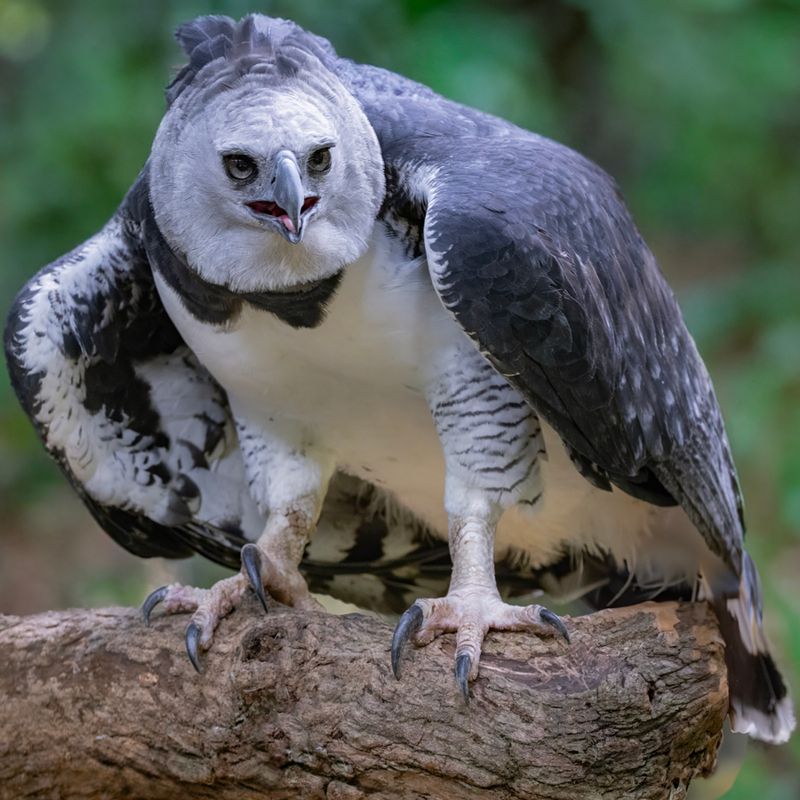
The Harpy Eagle employs unique hunting techniques that set it apart from other raptors. Stealth and precision are key; they use the element of surprise to capture prey. Their ability to navigate through dense foliage silently is unmatched.
They hover and wait patiently, capitalizing on the perfect moment to strike. This strategy minimizes energy expenditure while maximizing success rates.
The eagle’s acute vision allows it to spot even the slightest movement from great distances, making it an efficient predator and a master of its environment, both in strategy and execution.
Remarkable Lifespan
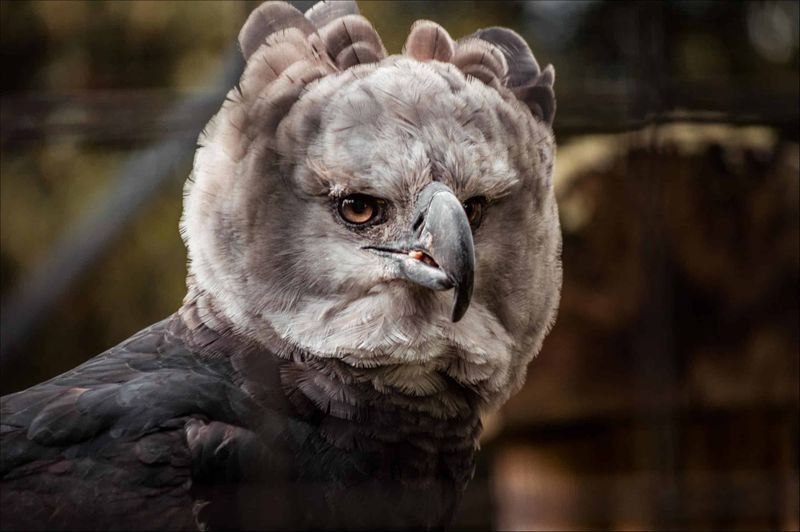
Harpy Eagles can live up to 35 years in the wild, a testament to their adaptability and resilience. This long lifespan allows them to establish territories and contribute significantly to their population over time.
Their longevity is supported by a healthy diet and minimal natural predators, though human activity poses threats. Aging eagles often display wisdom and caution, traits beneficial for survival.
Conservation efforts focus on maintaining their habitats and reducing human-induced dangers, ensuring these magnificent birds continue to grace the skies with their presence for many decades.
Strong Family Bonds
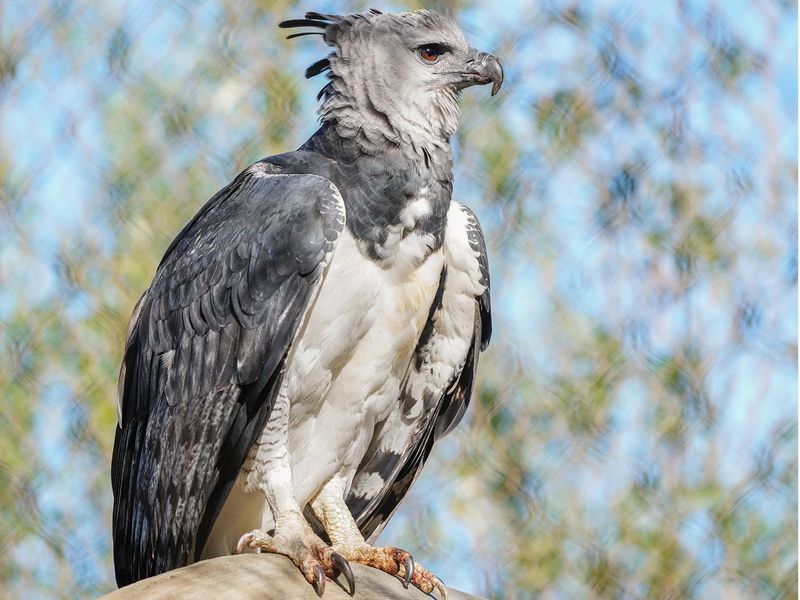
Harpy Eagles form strong family bonds, often mating for life. This monogamous nature ensures stability and cooperation in raising offspring. Both parents are involved in nurturing and protecting their young, which strengthens the family unit.
The chicks rely heavily on parental care for food and protection during their early months. This cooperative parenting extends to teaching survival skills, crucial for independence.
These strong bonds highlight the importance of family in the animal kingdom, demonstrating how teamwork and loyalty can enhance survival and prosperity among these majestic birds.
Vulnerable Conservation Status
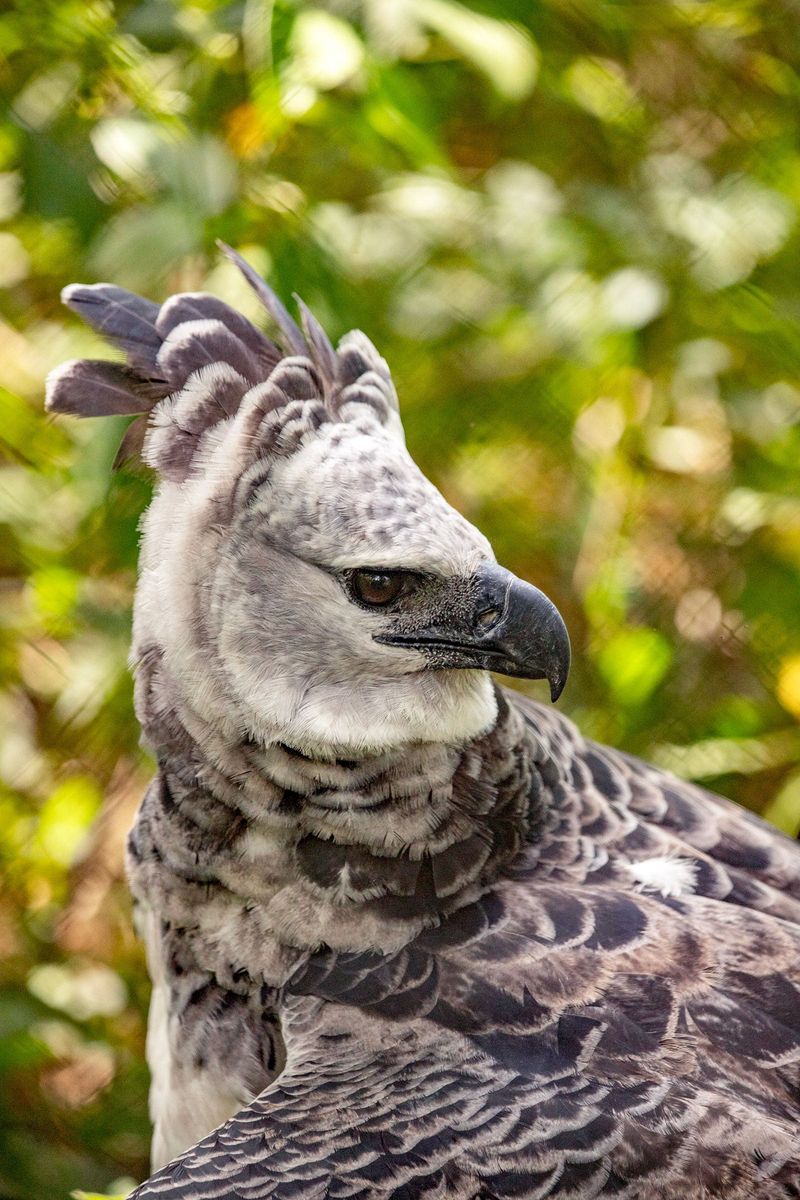
The Harpy Eagle is classified as ‘Near Threatened’ due to habitat loss and human interference. Deforestation and hunting pose significant risks. Conservationists work tirelessly to protect this iconic species through various initiatives.
Education and awareness campaigns play a critical role in reducing threats and promoting habitat preservation. Captive breeding programs contribute to population recovery efforts.
The survival of the Harpy Eagle is crucial for ecological balance, as they play a key role in their environment. Continuing these efforts is vital to ensure their majestic presence continues to inspire awe and wonder across the globe.
Cultural Significance
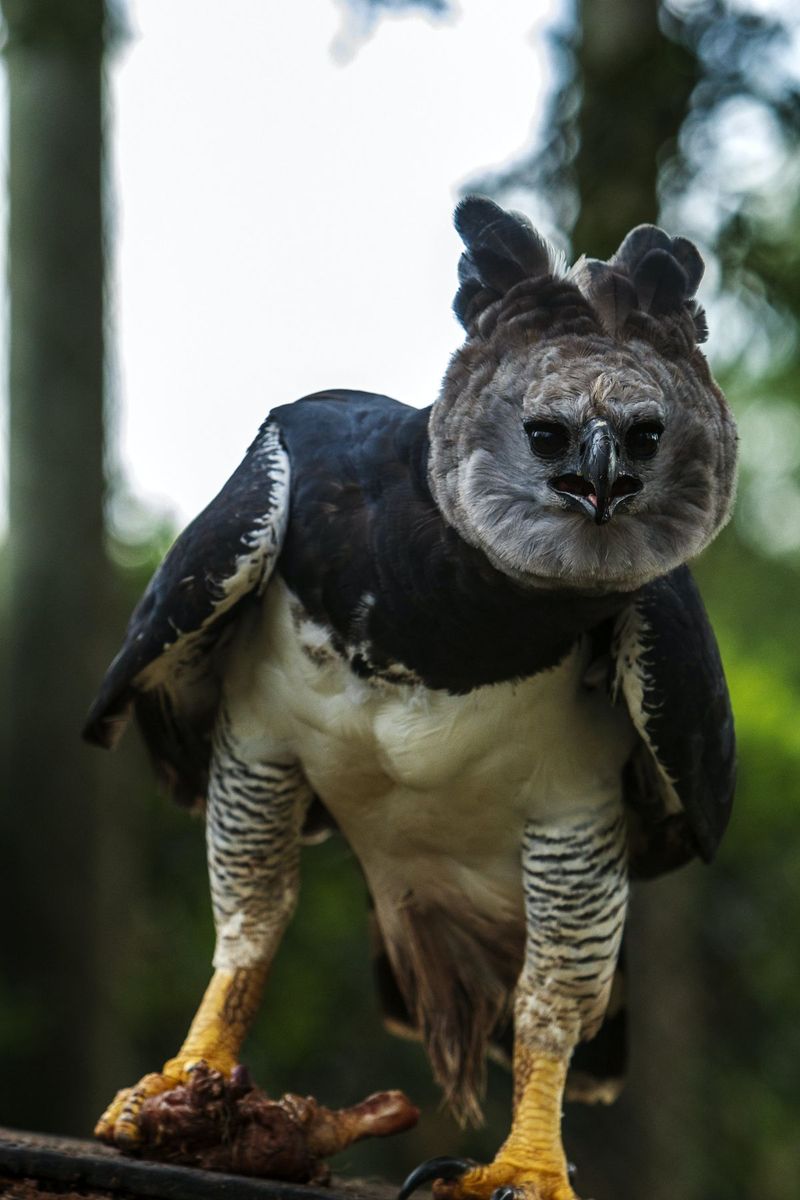
The Harpy Eagle holds cultural significance for many indigenous tribes across Central and South America. Often revered as a symbol of power and freedom, it features prominently in folklore and traditional stories.
This cultural reverence underscores the eagle’s status as a majestic and powerful creature. It often appears in art and rituals, symbolizing strength and spiritual guidance.
Understanding these cultural connections highlights the importance of the Harpy Eagle beyond its ecological role, showing how deeply intertwined it is with human history and cultural identity in the regions it inhabits.

